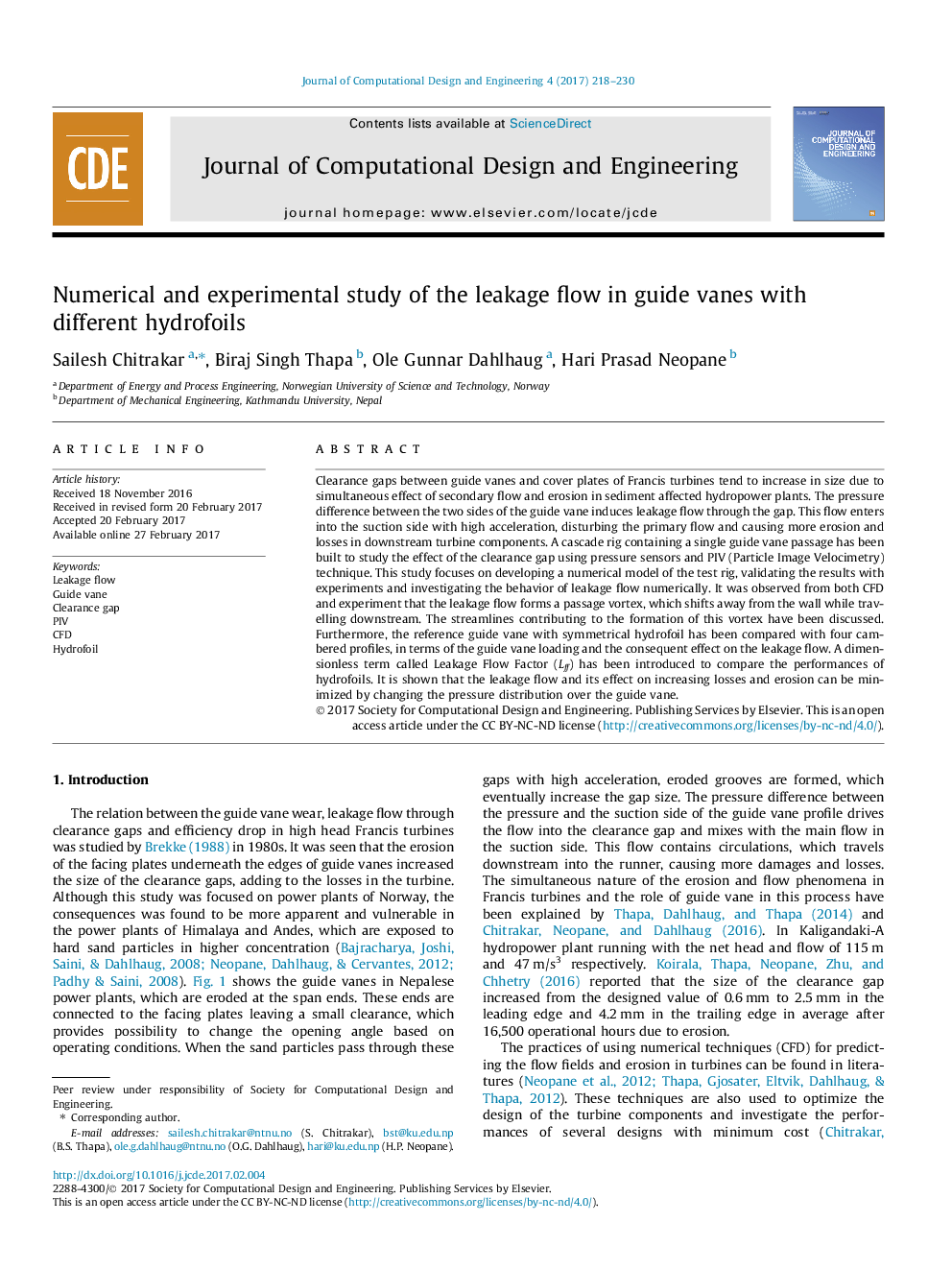| Article ID | Journal | Published Year | Pages | File Type |
|---|---|---|---|---|
| 4952965 | Journal of Computational Design and Engineering | 2017 | 13 Pages |
â¢Use of the computational tool (CFD) to predict the flow phenomena in hydropower application.â¢Validation of the computationally obtained pressure with pressure sensors and velocity with PIV experiment.â¢Use of the validated numerical model to compare the guide vane profiles for erosion-friendly design of the turbines.
Clearance gaps between guide vanes and cover plates of Francis turbines tend to increase in size due to simultaneous effect of secondary flow and erosion in sediment affected hydropower plants. The pressure difference between the two sides of the guide vane induces leakage flow through the gap. This flow enters into the suction side with high acceleration, disturbing the primary flow and causing more erosion and losses in downstream turbine components. A cascade rig containing a single guide vane passage has been built to study the effect of the clearance gap using pressure sensors and PIV (Particle Image Velocimetry) technique. This study focuses on developing a numerical model of the test rig, validating the results with experiments and investigating the behavior of leakage flow numerically. It was observed from both CFD and experiment that the leakage flow forms a passage vortex, which shifts away from the wall while travelling downstream. The streamlines contributing to the formation of this vortex have been discussed. Furthermore, the reference guide vane with symmetrical hydrofoil has been compared with four cambered profiles, in terms of the guide vane loading and the consequent effect on the leakage flow. A dimensionless term called Leakage Flow Factor (Lff) has been introduced to compare the performances of hydrofoils. It is shown that the leakage flow and its effect on increasing losses and erosion can be minimized by changing the pressure distribution over the guide vane.
Graphical abstractDownload high-res image (152KB)Download full-size image
